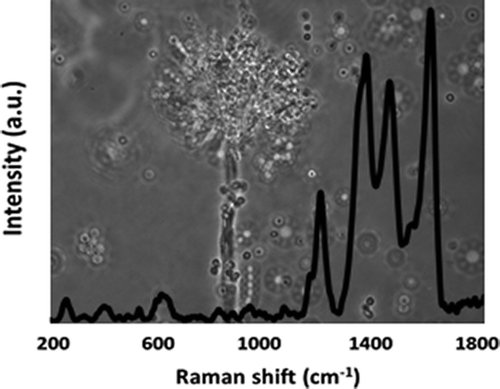With mold contamination of homes an ongoing concern – and a special threat to the 2.5 million foreclosed houses in the U.S., shuttered with little ventilation – scientists are reporting a new method to detect and identify low levels of airborne mold. The report, which describes a simple, fast method that could provide an early indication of potential contamination, appears in ACS' journal Environmental Science & Technology.
Sutapa Ghosal and colleagues indicate that mold contamination of homes, especially after water damage from storms and floods, is an ongoing concern. Although most molds are harmless, scientists have linked some with health risks to humans. Traditional methods for detecting mold contamination involve identifying the spores that mold release into the air. Those tests are labor- and time-intensive, often requiring that the mold grow in the laboratory. Moreover, not every mold can grow under these conditions. That's why the researchers have sought to develop a fast and easy method that can reliably detect and identify low levels of airborne mold – even single spores.
The scientists describe a new method, which involves collecting air samples on a piece of commercially available aluminum foil, and then analyzing the spores with a technique called Raman microspectroscopy (RMS). They used the method to detect and identify single spores from seven common types of mold. The team says that use of the new test could help with many problems in the public health, forensics sciences and environmental fields.
More information: “Raman Microspectroscopy-Based Identification of Individual Fungal Spores as Potential Indicators of Indoor Contamination and Moisture-Related Building Damage” Environ. Sci. Technol., 2012, 46 (11), pp 6088–6095. DOI: 10.1021/es203782j
Abstract
We present an application of Raman microspectroscopy (RMS) for the rapid characterization and identification of individual spores from several species of microfungi. The RMS-based methodology requires minimal sample preparation and small sample volumes for analyses. Hence, it is suitable for preserving sample integrity while providing micrometer-scale spatial resolution required for the characterization of individual cells. We present the acquisition of unique Raman spectral signatures from intact fungal spores dispersed on commercially available aluminum foil substrate. The RMS-based method has been used to compile a reference library of Raman spectra from several species of microfungi typically associated with damp indoor environments. The acquired reference spectral library has subsequently been used to identify individual microfungal spores through direct comparison of the spore Raman spectra with the reference spectral signatures in the library. Moreover, the distinct peak structures of Raman spectra provide detailed insight into the overall chemical composition of spores. We anticipate potential application of this methodology in the fields of public health, forensic sciences, and environmental microbiology.
Journal information: Environmental Science & Technology
Provided by American Chemical Society


















